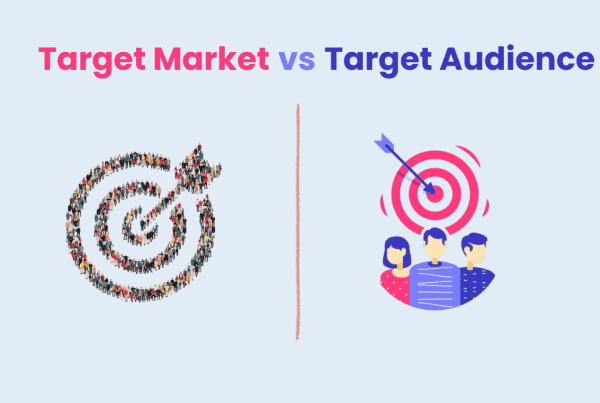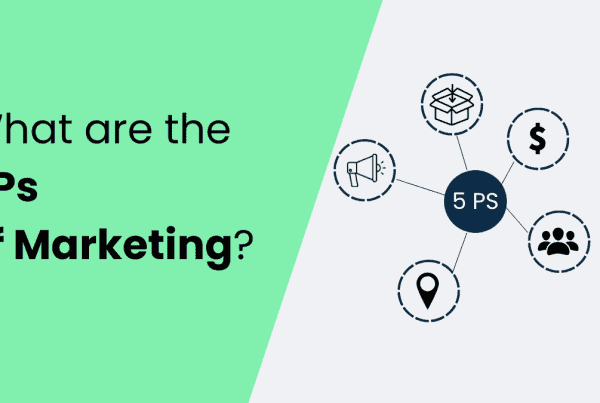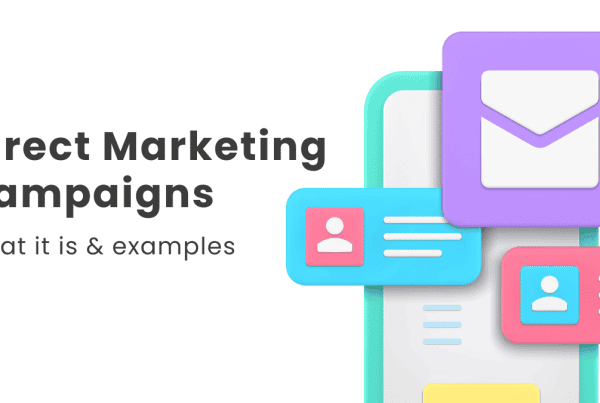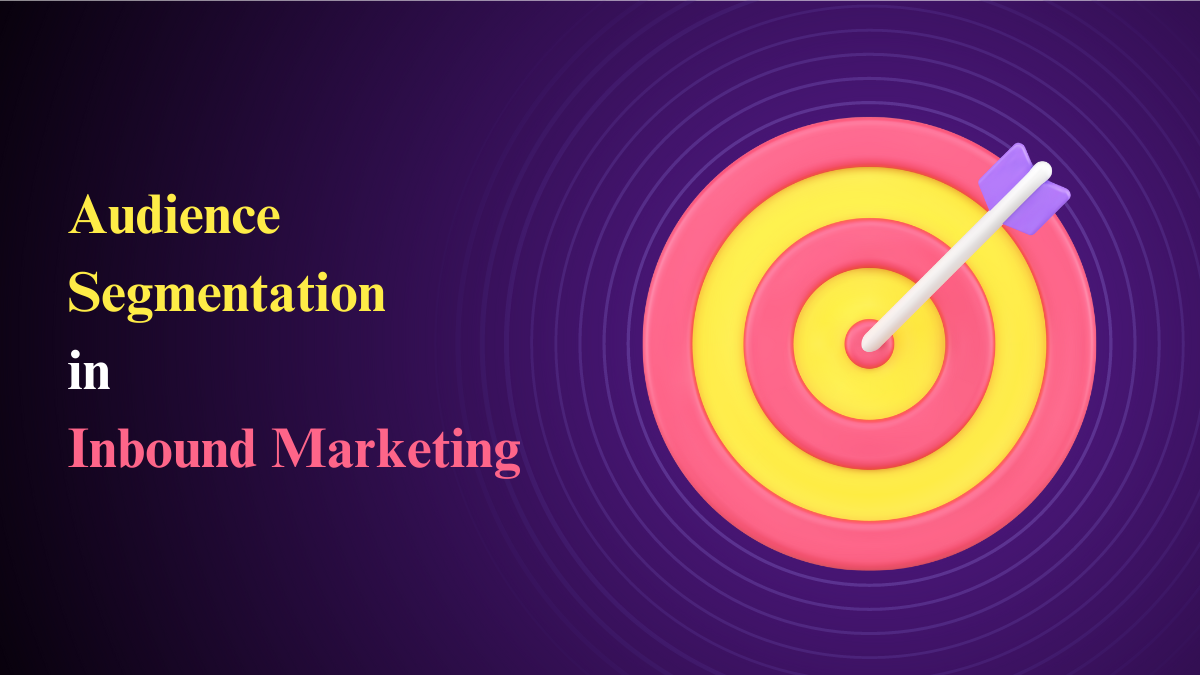
Do you ever notice how some companies always seem to know exactly what you like? They send you messages and offers that feel just right for you. Have you ever wondered how they do that so well?
Nowadays, knowing and connecting with customers have become super important for businesses. But how do some companies do it so easily? What’s their secret for making marketing and content that you really like?
In this article, we’ll uncover the mystery behind this and learn how companies use what they know about your likes to make your online experience better. We’ll talk about a special tool called “Audience Segmentation” and see how it can make your “Inbound Marketing Efforts” even better.
Inbound Marketing
Inbound marketing is all about making experiences that are valuable for people and good for your business. It means bringing potential customers to your website and blog by giving them useful content. When they show up, you connect with them through things like email and chat, promising to keep being helpful. And, in the end, you make them happy by being a caring guide and expert.
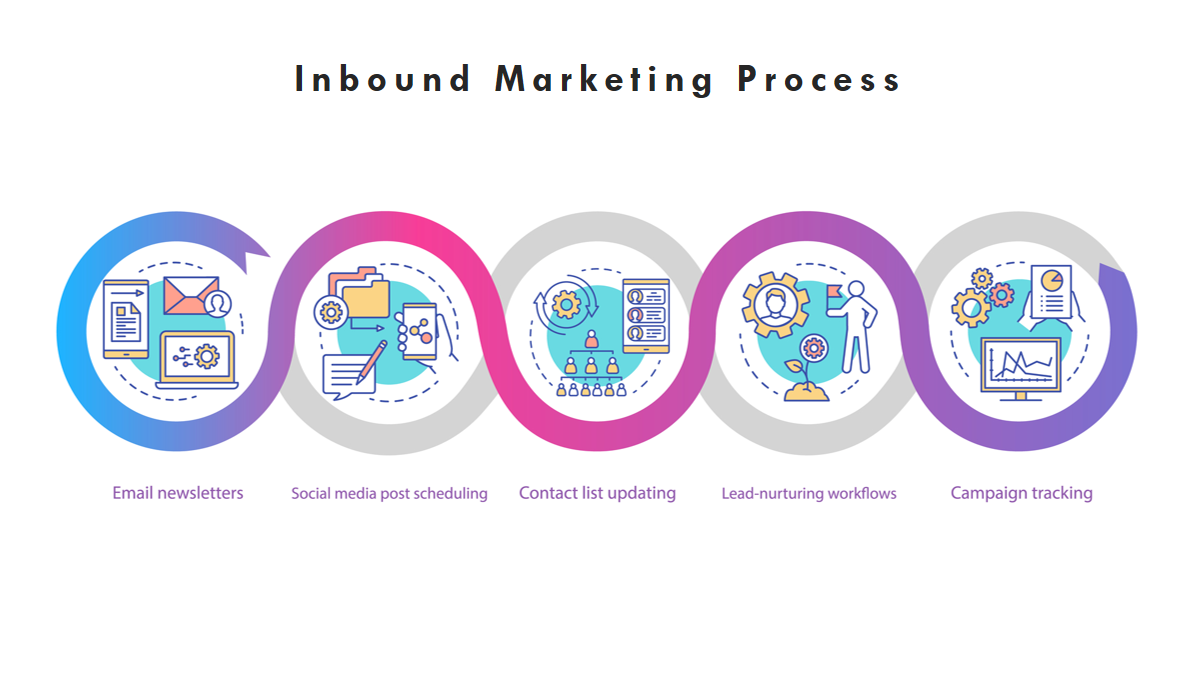
It is like being a friendly guide to your customers. Instead of bothering many people with ads they might not like, inbound marketing wants to be the kind of guide people enjoy spending time with. It does this by sharing stuff that people find interesting or helpful. The goal is to make sure you share the right information with the right people at the right time.
Brian Halligan, CEO and co-founder of HubSpot, explains, “Inbound marketing is about creating outstanding content for the right people at the right time. Audience segmentation is the tool that helps you know who those right people are.”
Unlike outbound marketing, with inbound marketing, you don’t have to fight for the attention of potential customers. By making content that solves the problems and meets the needs of your ideal customers, you naturally draw in the right people and build trust and credibility for your business.
Audience Segmentation
Audience segmentation is like sorting your audience into smaller groups that have something in common. This helps you create content and messages that fit each group better. It’s about treating each group as if they’re unique, so your messages make more sense to them and make their experience better.

Neil Patel, a famous digital marketer, talks about how this can help you get more out of your marketing budget. Instead of using the same approach for everyone, audience segmentation lets you focus on the groups that are most likely to become your customers.
The main reason for doing this is so that businesses can talk to each group in a way that makes sense to them. By doing that, businesses can create messages, content, and offers that feel just right for each group. This means people are more likely to like what they see and buy from the business.
The Impact of Audience Segmentation on Inbound Marketing
Audience segmentation enhances inbound marketing in several ways:
Precise Targeting
Splitting your audience into groups is like making different clubs for people with similar interests. Let’s say you own a store that sells clothes. You can create clubs for “Women’s Clothes,” “Men’s Clothes,” and “Children’s Clothes” because they all like different things.
Each of these clubs has its special likes and dislikes. For instance, the “Women’s Clothes” club might like dresses, while the “Men’s Clothes” club prefers suits.

So, by knowing what each club likes, you can send them messages that make them happy. You could send discounts on dresses to the “Women’s Clothes” club and tell the “Men’s Clothes” club about new suits they might like.
It’s like giving each group what they love, and that makes your customers feel like you understand them.
Better Personalization
Audience segmentation helps you make each customer feel like your business is their shopping buddy. This means you can do things like sending special emails that are just for them, showing them products they’re going to like on your website, or making social media posts that match their interests.
When you do this, it’s like telling your customers, “We know what you like, and we’re here to help you find it.” It’s like having a friend who knows your style and helps you pick out cool stuff.
Think about Amazon, for example. When you shop on Amazon, it remembers what you’ve looked at and bought before. Then, it suggests more things you might want to buy based on your history. This makes shopping there feel personalized like Amazon knows what you’re into, and that’s why people keep coming back. It’s like your own personal shopper online!
Improved Content Relevance
When you split your audience into groups, it helps you make content that fits them perfectly. It’s like making sure each person gets a story or message that they care about.
When people see content that’s just right for them, they pay more attention to it. It’s like when you hear a great joke or a fascinating story – you can’t help but listen.
And when you capture their attention, it’s easier to get them to do what you want, like buying something or signing up for your newsletter.
For instance, imagine a pet store. They can split their customers into groups like “Dog Lovers” and “Cat Lovers.” Then, they can share dog training tips with the dog lovers and cat care advice with the cat lovers. That way, each group gets the information they’re interested in, and it makes them more likely to come back to the store or subscribe to updates. It’s like giving people exactly what they want.
Enhanced Lead Nurturing
In inbound marketing, it’s like taking care of your plant to help it grow. You don’t just water it once and forget about it. You need to keep giving it the right care at the right time.
Audience segmentation is like knowing where your plant is in its growth journey. Is it just a seed, a little sprout, or a big, flourishing plant? Depending on that, you provide what it needs.
For example, think about a company that makes computer software. They can split their customers into three groups: “People who might be interested,” “People trying it out,” and “People who bought it.”
The first group, the “Interested” folks, might get information about how the software works. The second group, the “Trying it out” folks, could get updates about how to use it better. And the third group, the “Customers,” might get stories about how others are benefiting from the software.
By doing this, the company helps each group along their journey and gives them what they need. It’s like giving your plant the right care at every stage, so it grows strong and healthy.
Optimized Marketing Budget
Segmenting your audience isn’t just about making your customers happy, it’s also about using your money wisely. Instead of spending your money everywhere, you can put it where it counts most.
Imagine you have a travel website. Some people love adventure trips, and some like relaxing on the beach. Now, when it’s the adventure season, you can put more of your money into ads and deals for adventure-loving travelers. It’s like giving them the front-row seats to the exciting show.

At the same time, you don’t have to spend as much on the beach lovers because it’s not their season. This way, you’re being smart with your money and using it where it’s most likely to bring you more customers.
By doing this, you get more value for the money you spend, which is great for your business. It’s like buying only the ingredients you need for a recipe, rather than buying everything in the store. That’s how you make sure your business gets a lot more from your advertising budget.
How to Enhance Your Inbound Marketing Efforts Using Audience Segmentation?
Enhancing your inbound marketing efforts with audience segmentation means dividing your potential customers into smaller groups based on shared characteristics or behaviors. This helps you create more personalized and effective marketing strategies. Here’s how it works in simple terms:
- Identify Your Audience: First, you need to understand your overall target audience. Who are the people interested in your products or services?
- Segmentation: Break down this larger audience into smaller segments based on specific traits or behaviors. For example, you can segment by age, location, interests, or purchase history. This creates different groups or “segments” of potential customers.
- Personalized Content: Now that you have these segments, you can create content and messages that are tailored to each group’s needs and preferences. For instance, you might create different blog posts, emails, or social media messages for each segment.
- Timing: You can also time your marketing messages to reach each segment when they are most likely to engage. For example, if one segment is more active on social media in the evening, you can schedule your posts accordingly.
- Measure and Optimize: Finally, track the performance of your marketing efforts for each segment. Are some segments responding better than others? Use this data to refine your strategies over time.
Segmentation makes your marketing more relevant and increases the chances of attracting and retaining customers. It’s like tailoring your sales pitch to fit the specific interests and needs of different groups of people, rather than using a one-size-fits-all approach.
Audience Segmentation in Action
Let’s take a real-world example to illustrate the power of audience segmentation in inbound marketing:
Sarah’s Soap Emporium
Let me tell you a story about Sarah. She has an online shop where she sells special, handmade soaps. Sarah wanted to make her shop grow, so she decided to use a smart way called “inbound marketing.”
Now, here’s the cool part. Sarah didn’t treat all her customers the same way. She realized that people have different interests, just like how you might like different games or toys. So, she put her customers into three groups:
Group 1: Skincare Lovers
Sarah found some people cared about taking good care of their skin. So, she wrote stories and made videos about how her soaps make your skin healthy. Then, she sent those to the “Skincare Lovers” group. It’s like sharing your favorite superhero stories with your friends who also love superheroes.
Group 2: Earth-Friendly Shoppers
Sarah also found another group who liked things that were good for the planet. She made special soap packages that didn’t hurt the Earth, and she told this group first. They got special deals because they love eco-friendly stuff. It’s like having a club for people who care about the environment.
Group 3: Gift Givers
Then, some people bought Sarah’s soaps to give as presents. She made a special club for them too, called “Gift Givers.” At holiday times, she sent them stories and great deals, like a special club meeting when you get fun surprises.
Guess what? This made her customers happy! They liked getting stuff that was just right for them. And when customers are happy, they come back to Sarah’s shop more often.
That’s how Sarah grew her business by being smart and treating her customers like special friends with different interests. And you can do this too, even with your toys or games!
The results were impressive. The “Skincare Enthusiasts” engaged more with her content and frequently left positive reviews. The “Eco-Conscious Shoppers” segment saw a boost in sales of eco-friendly products. And during the holidays, the “Gift Buyers” segment made substantial purchases.
Conclusion
Audience segmentation is the secret sauce that enhances the effectiveness of your inbound marketing efforts. By understanding your audience, dividing them into segments, and delivering tailored content and experiences, you can attract, engage, and delight your customers like never before. The result? More meaningful connections, higher conversions, and a healthier bottom line. Inbound marketing and audience segmentation go hand in hand, making for a winning combination in today’s digital landscape. So, don’t wait – start segmenting your audience and watch your inbound marketing efforts reach new heights.
References:
- https://www.elfo.com/blog/audience-segmentation-the-key-to-enhancing-your-inbound-marketing-strategy/
- https://www.hubspot.com/inbound-marketing
- https://www.linkedin.com/pulse/how-can-audience-segmentation-enhance-your-inbound-marketing-brown/
- https://www.hubspot.com/company/management/brian-halligan
- https://neilpatel.com/blog/customer-segmentation/

